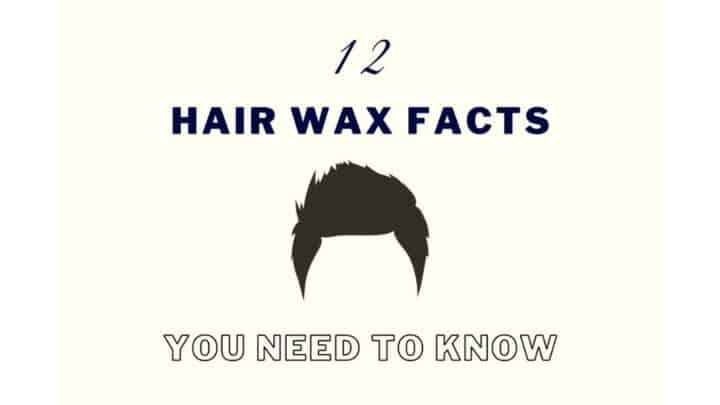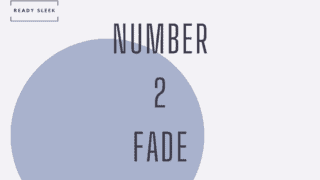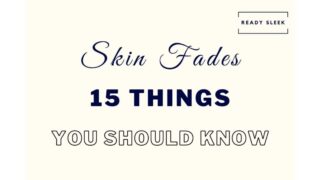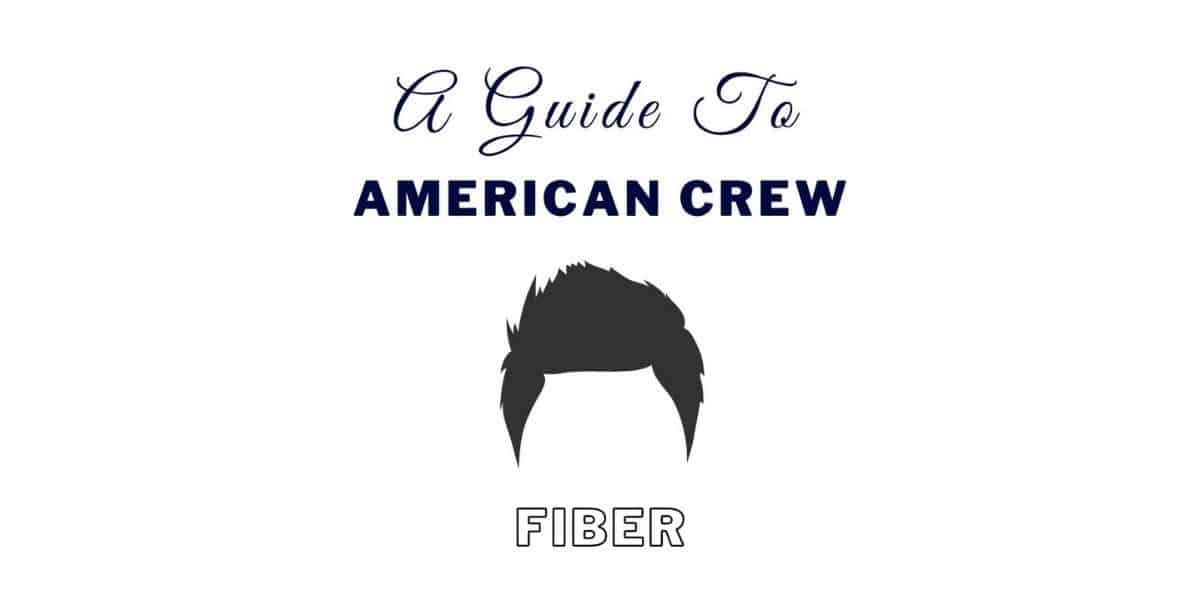Hair wax is a pretty accessible product. That’s the beauty of it.
Unlike some other products – for example, oil-based pomades – hair wax doesn’t have much of a learning curve.
However, hair wax still comes with its own set of dos and don’ts. There are good wax styling habits and there are bad ones.
Unfortunately, there isn’t a whole lot of information on best practices when it comes to hair wax. More specifically, there are some very specific hair wax questions that people often ask but are rarely answered effectively.
That’s what I’m going to do today. Answer those questions in the most helpful way possible.
Let’s get to it.
1. Can You Use Hair Wax Daily?
Don’t use hair wax every day. Doing so will require washing it every day and that could, in turn, cause excessive drying out of your hair.
The main reason this is a problem is that hair wax generally requires shampoo to properly rinse it out. A simple rinse with water isn’t usually enough to rinse out the wax-based product.
Excessive shampoo rinses can, unfortunately, dry out the hair.
Try and limit using hair wax to every other day at the least. If you find that your hair or scalp is extra sensitive or you’re more prone to it drying out, consider using it even less.
As the name would suggest, hair waxes are wax-based. Because of this, you can expect a bit of build-up over the course of a few days.
In other words, even after a rinse, you may well have some residual wax that builds up in the hair.
Be aware of this and know that you may well find you need to use less over time until you have a deeper conditioning rinse – similar to what you’d need with an oil-based pomade rinse.
2. How Long Does Hair Wax Last In Your Hair?
You can expect hair wax to hold your hair in place for around 3 to 5 hours.
They will vary in terms of the hold they provide, but in general, you should expect a low-to-medium hold with wax.
The beauty of hair wax is the nature of the hold it provides and not the strength.
Hair wax produces a pliable hold, which means it’s a soft hold that you’ll be able to restyle throughout the day.
This is unlike some other products such as water-based pomades and gels which dry stiff – these aren’t ideal for restyling without a bit of wet-combing to soften things up.
Waxes are best for styles that are formal, need some gloss, and aren’t complex enough to require a product with a stronger hold.
However, if by mid-afternoon you’re finding your style flopping down or some flyaways rearing their heads, the pliable hold of wax will allow you to restyle with no additional product or wet-combing required.
3. Does Hair Wax Wash Out Easily?
Hair waxes are usually oil-based or wax-based and so often don’t wash out easily. A deep conditioning rinse is the best way of washing out the residual build-up of hair wax.
Wax-based and oil-based products are great for adding some gloss and producing a pliable hold, but washing them out can be a pain.
Ingredients often used in commercial hair waxes include beeswax, castor wax, emulsifying wax, and lanolin.
The heavier the waxy components, the tougher it’ll be to wash out.
Try and avoid the many DIY rinsing methods floating around out there – dish soap is not your scalp’s friend.
If a simple shampoo isn’t quite removing all of the hair wax, rinsing it out with a commercially available deep conditioner would definitely be worth trying.
Aussie 3 Minute Miracle Moist (Amazon Link) is great and rinses out oil-based pomades too.
Apply it and brush it through. Then, give it some time – 10 minutes is usually a safe bet. After this, rinse it out. You’ll probably find that you get a better rinse than you would with a simple shampoo.
But you don’t want to be shampooing or conditioning your hair every day – it can be drying. It’s why giving wax a break every other day or so is usually a good option.
Do you really need to wash off hair wax though?
Yes. Hair wax should be washed off of your hair on the same day you applied it. You don’t want it rubbing off on your pillows and getting onto your skin.
It should be done with water alone at the very least.
4. Can You Use Hair Wax After Straightening?
Yes – hair wax can be applied after straightening. This is a good way of trying to prevent curls or frizz from reforming.
This is in contrast to water-based products such as gels which aren’t great after straightening. You’ll often find that your straightening efforts come undone after a short time.
Hair wax is oil or wax-based and works well for straightened hair. It’s most effective for defined, formal, and glossy styles where you’d prefer a pliable hold.
The versatility of hair wax is great.
It generally works well for all hair types ranging from straight to curly, although men with thin hair may benefit from a more matte product.
It’s important not to apply hair wax before straightening it. This will lead to you needing higher heat settings to get the same job done, which isn’t good for the hair.
In addition, the wax will gum up the straighteners over time.
Remember to use a heat protectant spray beforehand and if you’re going to apply hair wax, do so after straightening it when styling.
5. Should You Apply Hair Wax On Wet Hair?
Hair wax should not be applied to wet hair as it will make styling a lot more difficult. Apply it to dry or damp hair instead.
Hair wax is oil-based and so the product dissolving is less of a problem than it would be with water-based products like gels or water-based pomades.
However, applying wax to wet hair is usually a very ineffective way of styling.
For one, it’s difficult to actually know what it’ll look like once it’s dried. Hair clumps together when it’s wet and your hair will look very different after 30 minutes of drying.
In addition, the weight of the water will make styling difficult as well. This isn’t a big deal if you’re going for a flatter style like a slick-back.
But if you’re looking to create some height, volume, or lift, you’ll find that the water will cause it to keep flopping back down.
Apply hair wax to dry hair if you’re looking for less of a glossy finish and you want a stronger hold.
Apply it to damp (towel-dried) hair if you want a glossier finish and are willing to tolerate a slightly weaker hold.
But never apply it to wet hair.
6. What If Hair Wax Makes Your Hair Too Greasy?
If hair wax makes the hair look too greasy, use less of it, apply it to dry hair, or consider using one with a lower proportion of oil-based ingredients. The heavier the waxy components, the more greasy it’ll look.
Unfortunately, you should expect a greasy finish with oil-based and wax-based products – at least to a certain extent.
Waxes generally aren’t as heavy or shiny as oil-based pomades, for instance, and so you can usually expect a less greasy finish.
Having said that, the term “hair wax” is so widely used – often incorrectly – that you can get very heavy “hair waxes” that feel pretty similar to oil-based pomades.
If you do find that the wax you’re using produces too greasy of a finish, try out the following:
- Use less of it. The more you use, the greater the accumulation of oily ingredients and the greasier the finish.
- Apply it to dry hair. This will produce a less glossy and shiny finish than if you were to apply it to damp hair.
- Use a different wax. Try to find a lighter wax that doesn’t feel as heavy. A tip would be to see how long it takes to break down between your palms. If you can’t be bothered with the trial and error, browse some
Amazon reviews to get a feel for it.
Here’s an option – try a clay-wax hybrid like Hanz De Fuko’s Claymation. This product is more matte than glossy but does have a bit of shine to it because of the wax component.
If you’re looking for less of a greasy finish, it’s definitely one to try.
7. Should You Use Hair Wax On Thin Hair?
Hair wax can sometimes make thin hair look even thinner by adding shine and revealing too much of the scalp. This effect can be reduced by using a volumizing spray before application or simply applying less wax to dry hair.
Ultimately, when it comes to thin hair, wax isn’t going to be as helpful as some other hair products in certain ways.
Clays and pastes are better for building texture and volume. This can make thin hair look fuller.
Waxes, on the other hand, are better for flatter, more defined, and glossier styles. It isn’t as good for producing volume or texture.
Clays include minerals such as kaolin and bentonite which make hair strands look plumper and styles look fuller overall. It’s one of the best products for thin hair in this respect.
Having said that, there’s no reason why someone with thin hair can’t or shouldn’t use glossier products like pomades, waxes, and gels.
If you want more shine despite it potentially making the hair look thinner, there’s no reason why not as it won’t necessarily be a bad look.
Men with thin hair can still style pompadours, slick-backs, side-parts, and other classically shiny styles.
It may just be harder to do so or you may have to tolerate some scalp showing.
Wax isn’t usually as shiny as oil-based pomade – the shine usually more subtle. Because of this, using small amounts of wax and applying it to dry (not damp) hair should minimize the shine to the point where it doesn’t make thin hair look that much thinner.
8. Can Hair Wax Expire And Go Bad?
Hair wax does expire and go bad. Most hair waxes come with a Period After Opening symbol indicating how long it is good for after opening it.
The PAO is signified by a symbol of a jar with a floating lid. It’ll usually have a number followed by an M which tells you how many months after opening the wax it’ll be OK to use.
For example, a PAO of “12M” indicates that the hair wax will expire 12 months after popping the lid.
Although this may seem arbitrary, it’s best to follow this symbol as it’s really the only indication of how long a product such as this is good for.
The good thing is that if the product is being regularly used, it’s unlikely the wax will last beyond this date in any case. 12 months, for instance, is a pretty long time for a well-loved hair product to last.
Having said that, store it in a dry and cool location to ensure it doesn’t go bad prematurely.
In addition, if you notice the hair wax changing in consistency, color, or smell, buy yourself some new stuff no matter what the PAO says.
What if your hair wax has dried out?
If the hair wax has dried out, get rid of it and buy some more. Trying to heat up wax is unsafe and also usually ineffective, depending on the types of waxes included.
Wax often dries out if the lid is left off for prolonged periods of time. So the best way of preventing this from happening would be to keep the lid on whenever it’s not in use.
9. Can You Use Hair Wax With Oil?
Avoid using hair wax with oil. The two products will generally be too heavy together and lead to an excessively greasy appearance.
Hair oil is an effective way of moisturizing and hydrating the hair, especially after it’s been washed.
It can also sometimes be used to tame the hair before styling.
However, styling with hair wax after applying hair oil would essentially be combining two greasy products.
It’ll usually be too heavy and add too much gloss or shine. Using both can also cause the scalp to become excessively oily as well.
10. Is Hair Wax Water Soluble?
Hair waxes are generally not fully water-soluble. Waxes are lipids and do not mix with water.
This is relevant because it makes it tougher to wash out than a water-soluble hair product.
Water-based pomades, gels, as well as some pastes and putties are often water-soluble and wash out with no trouble (even with no shampoo).
But hair wax can sometimes cause problems. The heavier waxes often benefit from a deep conditioning rinse.
One way in which being water-insoluble is good is when it rains.
It can be an absolute nightmare when it pours down 15 minutes after you’ve finished styling and that glorious hair flops down soaked.
The good thing about oil-based and wax-based hair products is that the oily core will repel the water and won’t dissolve.
Yes, the rain may cause it to flop down due to the weight of the water. But there should be enough wax left to restyle once you’re dried off.
Oil-based pomades enjoy the same benefit.
11. Can You Bring Hair Wax On A Plane?
Hair wax can be brought in a carry-on bag as long as it’s less than 3.4oz (100ml). This is necessary for compliance with the TSA requirements for liquids and gels.
Although it may sound strange, hair wax would fall under this category and so would need to comply with the rules.
If your specific wax doesn’t meet these requirements, it would be worth using a different one or looking for a travel-sized version of the one you’ve got.
Unfortunately, transferring wax into a smaller container isn’t quite as easy as it would be with hair gel or water-based pomade. The consistency just makes it too difficult.
Another thing to note is that this rule will hold true for most major airlines. It’s always worth checking the specific instructions for liquids and gels in a carry-on for the airline you’re traveling on.
12. What Are The Best Alternatives To Hair Wax?
The best alternatives to hair wax are glossy products such as oil-based pomades if you want a pliable hold, or gels and water-based pomades if you’d rather a stiff hold.
Hair wax is known for adding shine – it’s usually better for more formal and defined styles, although it’s more versatile than a super-glossy oil-based pomade would be.
If you’re looking for products that would produce a similar effect to wax, pomades and gels are your best bet.
However, you need to be aware that the hold these products produce can vary in their nature.
Hair wax produces a nice, soft, pliable hold that you can restyle throughout the day. It doesn’t dry stiff.
Gels and water-based pomades may be able to give you shine, just like a wax would. However, they do dry firm and stiff which won’t appeal to some men.
There are, of course, other alternatives to hair wax that produce very different effects.
These are better for building volume, lift, and texture and generally better suited to messier or more layered styles. They include clays, pastes, and putties.
So, the alternative to hair wax you choose really depends on what you’re looking to achieve. But whether you’re looking to recreate the shine or the pliability of wax or whether you’re looking for a different effect altogether, you’ve got options.
Conclusion
There you have it. A whistle-stop tour of some frequently asked questions on hair wax that were simply desperate for some proper answers.
Hope you found that helpful.
Happy stylin’.
Ready Sleek founder. Obsessed with casual style and the minimalist approach to building a highly functional wardrobe. Also a fan of classic, vintage hairstyles.







